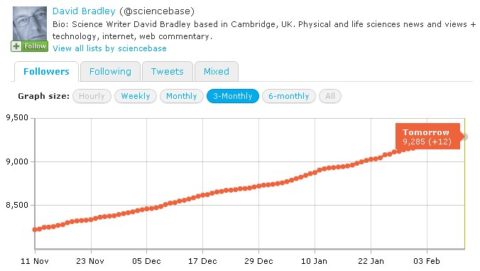 A friend of mine, András Paszternák, runs a thriving online nanotech community called Nanopaprika (he’s in Hungary, hence the name). He started the community (for which I am a Scientific & Advisory Board member) when he was doing his PhD and it has grown rapidly into one of the most targeted niches on the Web with lots of partnerships across the nano community in academia, industry and publishing. Nevertheless, András is impatient and dissatisfied with the pace of growth. He wants to reach out to the whole community a mere fraction of which (at 4000+ members from 70 countries) he has so far engaged.
A friend of mine, András Paszternák, runs a thriving online nanotech community called Nanopaprika (he’s in Hungary, hence the name). He started the community (for which I am a Scientific & Advisory Board member) when he was doing his PhD and it has grown rapidly into one of the most targeted niches on the Web with lots of partnerships across the nano community in academia, industry and publishing. Nevertheless, András is impatient and dissatisfied with the pace of growth. He wants to reach out to the whole community a mere fraction of which (at 4000+ members from 70 countries) he has so far engaged.
“Nanopaprika is really not about numbers,” András told me. “I was also happy with first 10, 100, 1000 members. The story is about active members, about grad students who find a job, about industry people who share information about new products, about teachers who develop educational activities.”
Of course, each milestone is an achievement, but each milestone also means that the next milestone is further to go and there is always a sense of creeping dissatisfaction when one looks at the analytics. After all, there are other specialist online communities that are much bigger. Mendeley, ResearchGate, etc all have at least an order of magnitude greater membership, although it would be interesting to know how many are active too. Then there are the learned societies that have double that again or four, five, six times as many members. And if you’re talking true count envy, Facebook had 500 million members last year and has added another 100 million since.
I remember when I reached by first 100 Twitter followers, I was so pleased, but immediately I was thinking about the next big round number. 200, 300, 400 didn’t seem such a big deal. 500 was nice but reaching 1000 was better. I didn’t even notice when I got to 1000+100, then 1200, then 1300. 1500 wasn’t too bad, but I really wanted to get to 2000. Once I’d passed that point, 3000 wasn’t even in my sights, I wanted to get to 5000 as quickly as possible.
Growth seems to be linear, with the occasional spike when someone big retweets one of your links. The same happens with all communities, growth is rarely exponential unless your early adopters are incredibly well connected and successfully spread the word to their vast networks, at which point you can pass a tipping point and see runaway growth.
Smaller spikes to occur. They have happened several times since I joined Twitter in June 2007, but after the spikes, the growth rate seems to revert to the same angle of upward incline on the chart. 6000 came and went, as did 7000, then 8000. I currently have 9272 followers on Twitter and each day acquire maybe a dozen or so new followers.

TwitterCounter.com tells me that tomorrow I will have reached 9285. It also predicts that within three weeks I will have 9500. But, in six month’s time, or thereabouts I should have 10,000 followers.
So, what’s the next milestone after that? 20,000? 30,000? 100,000? At this rate that will take me 20 years. Is anyone still going to be tweeting five years, let alone 20? Surely, I’ll have found something better to do by then…
Each milestone is an achievement, but each milestone also means that the next milestone is further to go.
By the way, I do know that Twitter is not simply about accumulating numbers. I do know that a lot of the “people” that are following me are not actively using Twitter. Lots of them are automated “bot” and spammer accounts and I really ought to remove those and block them.
I also know that at the core there are a few dozen friends and contacts with whom I regularly trade tweets and links, with whom I direct message (DM) and with whom I even have conversations via email, messaging, SMS, the phone and even in the real world.
It’s entertaining, it’s a chance to share what you know and learn about what you don’t. It’s a chance, vaguely, to earn a crust. It’s not really about the numbers. While every follower matters, there are only a limited number that count.